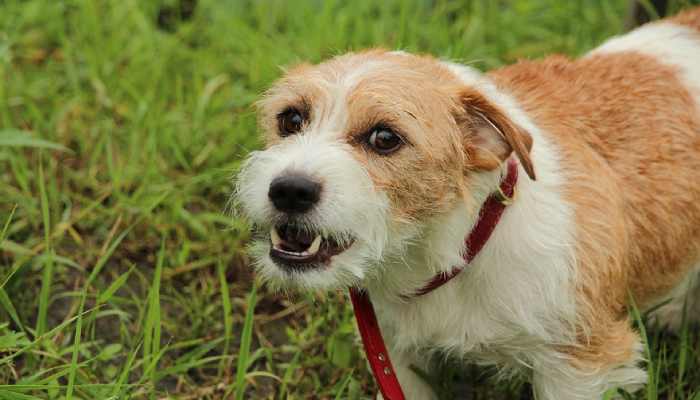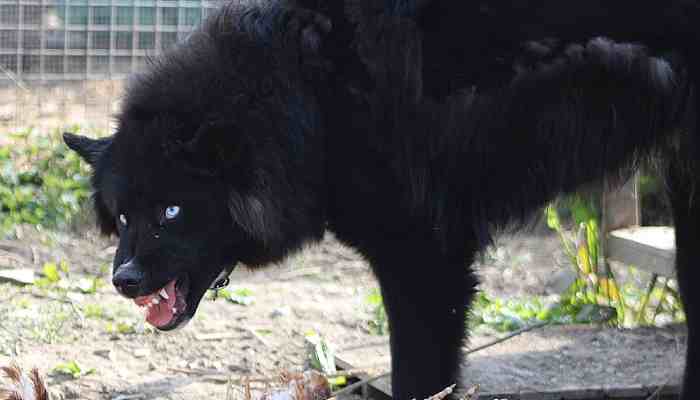In the fascinating world of dogs, where wagging tails and playful barks often signify joy and camaraderie, there exists a darker side – a side shrouded in growls, snarls, and the unsettling reality of dog aggression towards other animals. This multifaceted issue raises questions, stirs emotions, and demands a closer look at the complexities that lie beneath the surface. So, join us as we delve into the realm of canine aggression, exploring its causes, consequences and potential solutions,.
At its core, dog aggression towards other animals stems from a primal instinct – a vestige of their ancient ancestry. Dogs, descendants of wolves, carry within them the remnants of their wild predecessors’ territorial nature and survival instincts. While domestication has tempered these instincts to a certain extent, the propensity for aggression can still arise, leading to conflicts and clashes with other animals.
Understanding the causes behind dog aggression is paramount to addressing this challenging issue. Factors such as fear, resource guarding, and a lack of socialization can all contribute to a dog’s aggressive tendencies. Fear, in particular, plays a significant role in shaping a dog’s reaction towards other animals. It may stem from past traumatic experiences or simply be an inherent characteristic of a dog’s temperament. Regardless of the origin, fear-induced aggression can be a serious concern, requiring careful handling and intervention.
Additionally, resource guarding, where dogs become possessive over food, toys, or their territory, can trigger aggressive behaviours towards other animals. This protective instinct, while instinctively understandable, can escalate into confrontations, making it crucial for owners to manage resource guarding issues to mitigate potential conflicts.
Another contributing factor to dog aggression is a lack of socialization. Dogs that have not been adequately exposed to a variety of animals during their formative years may struggle to navigate social interactions, leading to defensive or aggressive responses when encountering unfamiliar animals. Early and ongoing socialization plays a pivotal role in shaping a dog’s ability to coexist peacefully with other animals, emphasizing the importance of proper introductions and positive experiences.
The consequences of dog aggression towards other animals extend beyond mere altercations. For owners, it can be emotionally distressing, accompanied by feelings of helplessness and guilt. The strain on human-animal relationships can be significant, as owners grapple with the challenge of managing their dog’s aggression while maintaining a harmonious household. Moreover, the potential harm inflicted on other animals involved in these encounters cannot be overlooked. Physical injuries, trauma, and even fatalities can occur, highlighting the urgent need to address and resolve this issue.
Finding solutions to dog aggression towards other animals requires a multifaceted approach. Professional guidance from experienced dog behaviourists or trainers can prove invaluable, providing owners with tailored strategies to manage and modify their dog’s aggressive tendencies. Implementing positive reinforcement training techniques, combined with desensitization and counterconditioning, can help redirect a dog’s responses and promote more positive interactions with other animals.
Moreover, responsible ownership plays a vital role in preventing and managing dog aggression. This includes proactive measures such as early socialization, providing proper training and obedience, and ensuring secure containment when around other animals. Recognizing and respecting a dog’s limitations and individual needs is crucial, as pushing a dog beyond its comfort zone can exacerbate aggressive behaviours.
The issue of dog aggression towards other animals is complex and multifaceted, demanding our attention, understanding, and proactive efforts to address it. By delving into the causes, consequences, and potential solutions, we can strive towards creating a safer and more harmonious coexistence between our beloved canine companions and the diverse array of animals they encounter. Through education, intervention, and a commitment to



